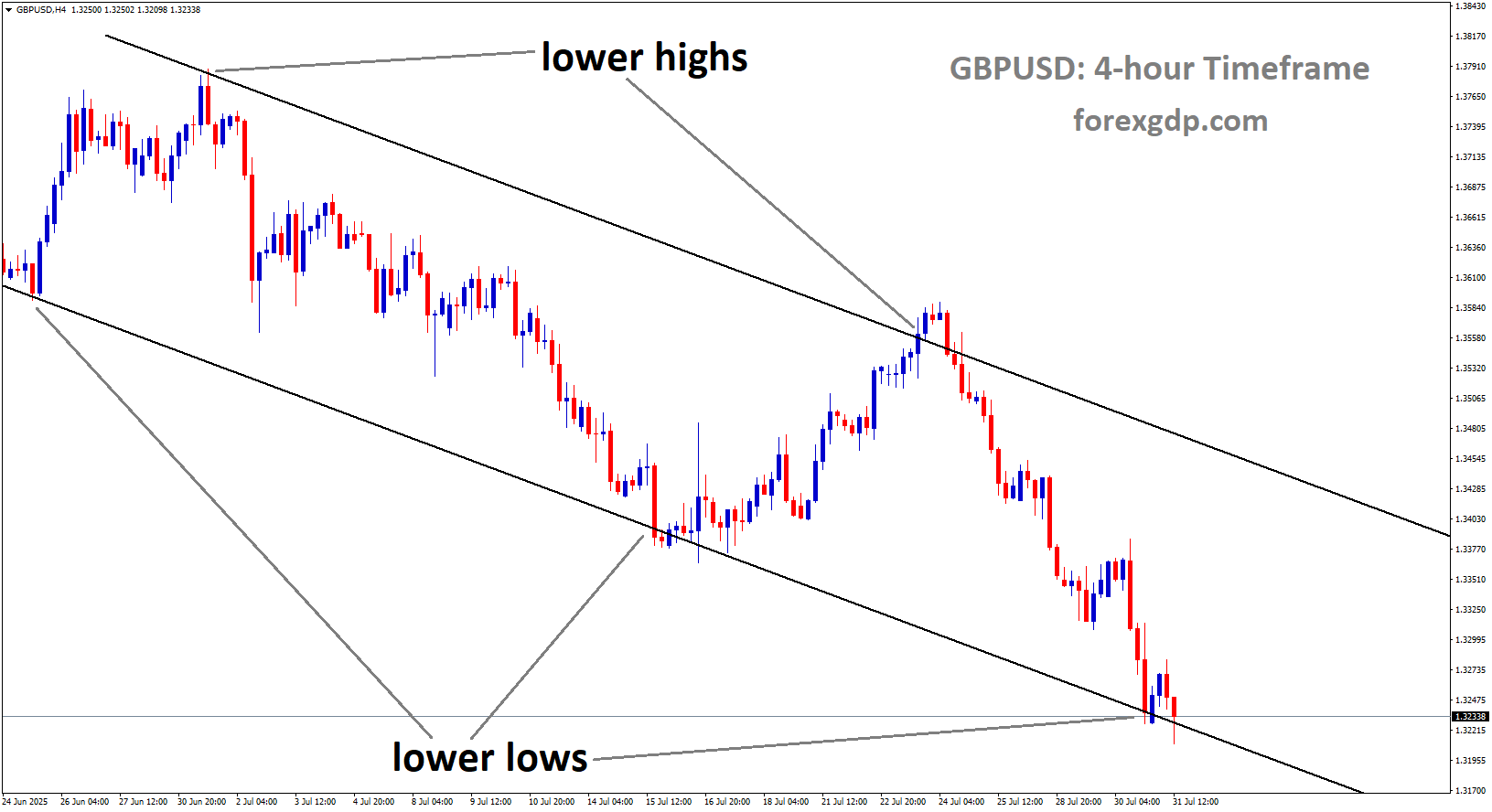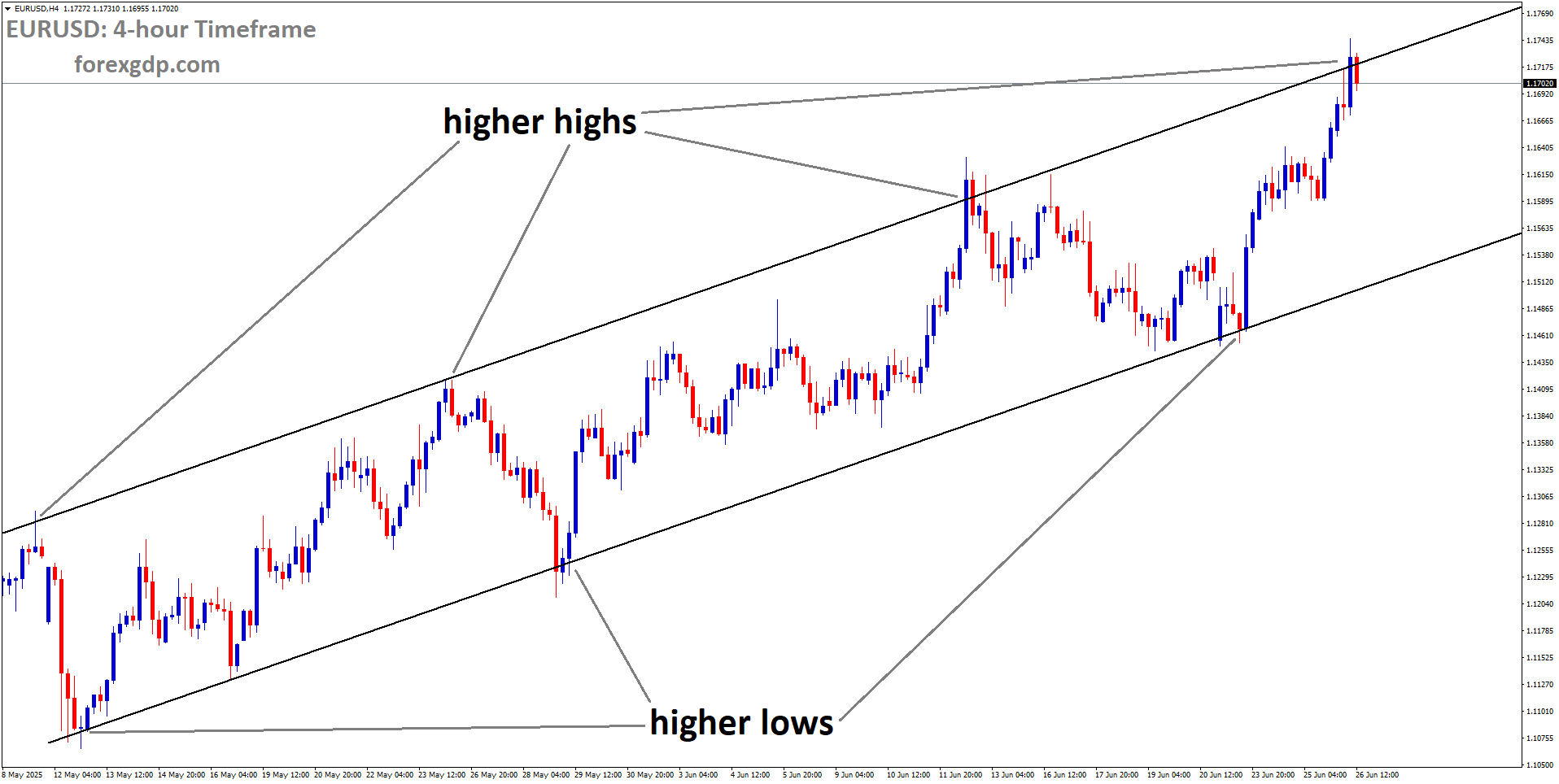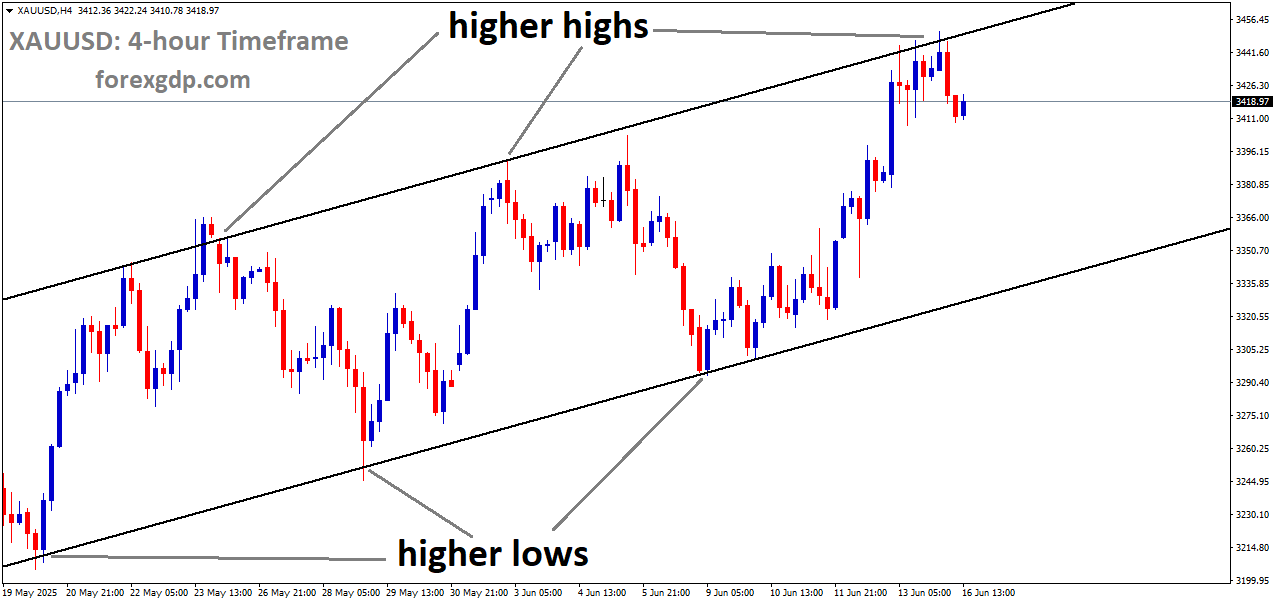GBPUSD is moving in a descending channel, and the market has reached the lower low area of the channel
Daily Forex Trade Setups July 31, 2025
Stay on top of market trends with our Daily Forex Trade Setups (July 31, 2025)
GBPUSD Bounces Back Slightly as Dollar Momentum Slows Down
The currency market can feel like a rollercoaster, especially if you’re watching the Pound Sterling lately. If you’re wondering why the British Pound seems to be wobbling and what could be coming next, you’re not alone. Let’s break down what’s really happening, without the jargon or technical chatter.
What’s Going On With the Pound Right Now?
The Pound has been having a bit of a tough time recently. After enjoying a solid run for several days, it suddenly started slipping and hasn’t quite managed to bounce back with confidence. While it’s seen a minor recovery from recent lows, it’s not exactly sprinting ahead either.
One of the biggest reasons behind this struggle? The strength of the US Dollar. Yep, the American currency has been on a bit of a winning streak lately, and when the Dollar gets stronger, other currencies like the Pound often find themselves under pressure.
But why is the Dollar so strong right now? A big part of it has to do with how the market is thinking about interest rates in the United States.
Why Interest Rates Are Shaking Things Up
The Fed’s Changing Tune
Not long ago, a lot of traders and investors thought the US Federal Reserve (the Fed) was going to start cutting interest rates soon—possibly as early as September. That would usually weaken the Dollar, giving a bit of a boost to other currencies like the Pound.
But that expectation is starting to fade. After some strong economic reports in the US and firm comments from Fed Chair Jerome Powell, people are no longer so sure rate cuts are coming anytime soon. Powell said inflation is still a concern and the economy is doing just fine. That means there’s no rush to lower rates, and the Dollar has remained strong as a result.
In fact, the chances of a Fed rate cut in September have dropped noticeably. That’s a big deal for currency traders and anyone watching how the Pound compares to the Dollar.
What About the Bank of England?
Meanwhile, across the pond, the Bank of England (BoE) is facing its own set of challenges. There’s growing talk that it might cut interest rates as soon as next week.
Why? Well, inflation in the UK has been a thorn in the side for quite a while now. While some parts of the economy are slowing down, price pressures are still sticking around. On top of that, the UK labor market is starting to show signs of weakening. Fewer new jobs are being added, and hiring is becoming more expensive for employers due to higher contributions to social security.
So the BoE has a tough decision to make. On one hand, cutting rates could support the economy. On the other hand, they risk stoking inflation further. It’s a tricky balance, and the uncertainty around it is keeping the Pound in check.
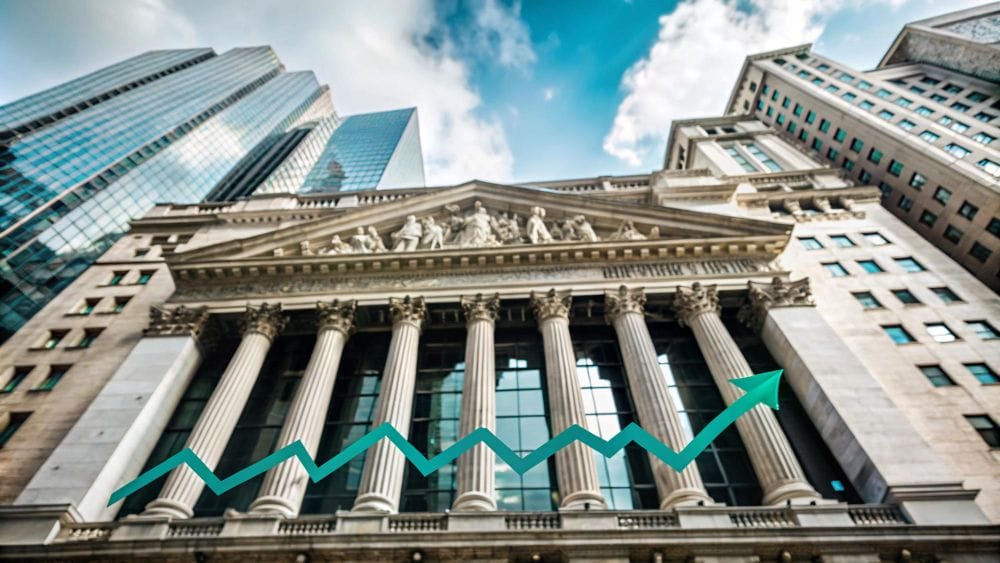
The Pound’s Performance Compared to Other Currencies
It’s not just the Dollar that’s giving the Pound a hard time. If we look at how the British currency is doing compared to others, it’s been underperforming overall. In particular, it hasn’t been able to gain much ground against many major currencies—except for a few North American ones.
Part of the reason for this is a lack of fresh data from the UK recently. With a fairly quiet economic calendar, there hasn’t been much news to give the Pound a boost. That means global factors like US data and central bank updates are having an even bigger impact than usual.
Investors are also getting ready for some potential fireworks next week when the BoE makes its next move. That anticipation is keeping the market tense and the Pound’s movement limited.
What Could Happen Next?
Key US Reports Coming Soon
Looking ahead, two big pieces of data from the US could play a major role in where the Pound goes next: the Nonfarm Payrolls (NFP) report and the ISM Manufacturing PMI. These will show how many new jobs were added in the US and how the manufacturing sector is performing.
If those reports come in strong again, it could push the Dollar even higher. That would make it even harder for the Pound to recover. But if the data is weaker than expected, we might see the Dollar ease up a bit—and that could be the breathing room the Pound needs.
BoE’s Decision Is Crucial
Closer to home, all eyes are on the BoE’s upcoming interest rate decision. If the central bank does cut rates, especially by more than expected, the Pound could take a further hit. On the flip side, if the BoE decides to hold off and sound more cautious, it might surprise the markets and support the Pound a bit.
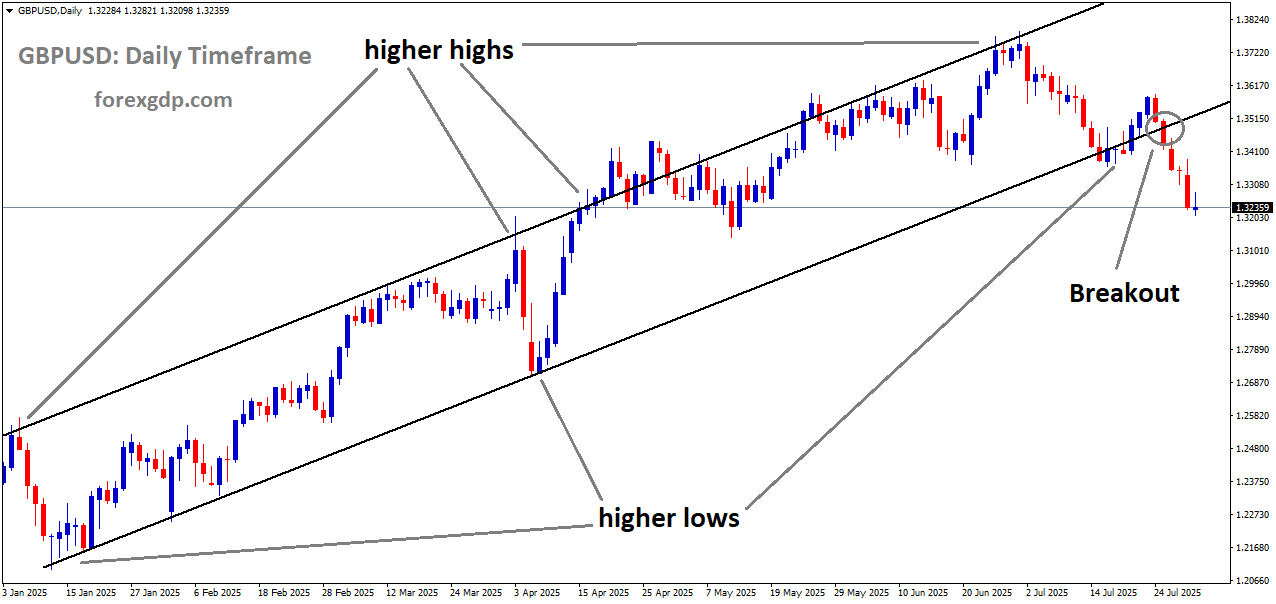
GBPUSD has broken the Ascending channel on the downside
Either way, we can expect a good deal of volatility. Currency traders will be watching every word of the BoE’s announcement and press conference for clues on what might come next.
What This Means For You
If you’re someone who regularly exchanges currencies, travels, trades, or runs a business impacted by the GBP/USD rate, this is a time to stay alert. The combination of a strong Dollar, unclear UK interest rate direction, and upcoming economic data from both sides of the Atlantic could make for a bumpy ride.
Keep an eye on trusted news sources for updates around the BoE’s rate decision and key US economic releases. Staying informed can help you make smarter choices, whether it’s related to travel, investment, or international business decisions.
Final Summary
The Pound Sterling is in a bit of a tight spot right now. After showing some resilience, it’s facing headwinds from a strong US Dollar and market nerves about what the Bank of England might do next. With rate cut expectations fading in the US and growing in the UK, the GBP/USD pair has been under pressure.
Add in a quiet local economic calendar and some uncertainty about inflation and hiring trends in the UK, and it’s clear why the Pound is having a hard time finding direction. Upcoming data from the US and the Bank of England’s rate decision will likely shape the next move.
For now, it’s a waiting game. But with so many moving pieces, the Pound’s story is far from over. Keep watching, stay informed, and be ready for whatever comes next.
EURUSD Eyes Recovery After Fed Shockwaves Begin to Fade
If you’ve been keeping an eye on the currency markets lately, you’ve probably noticed something unusual: the Euro hasn’t had the best week. After losing around 2.5% already, it’s trying to bounce back — but it’s been an uphill battle. This dip isn’t just a random blip. There are solid reasons behind it, and they mostly have to do with what’s happening across the Atlantic in the United States.
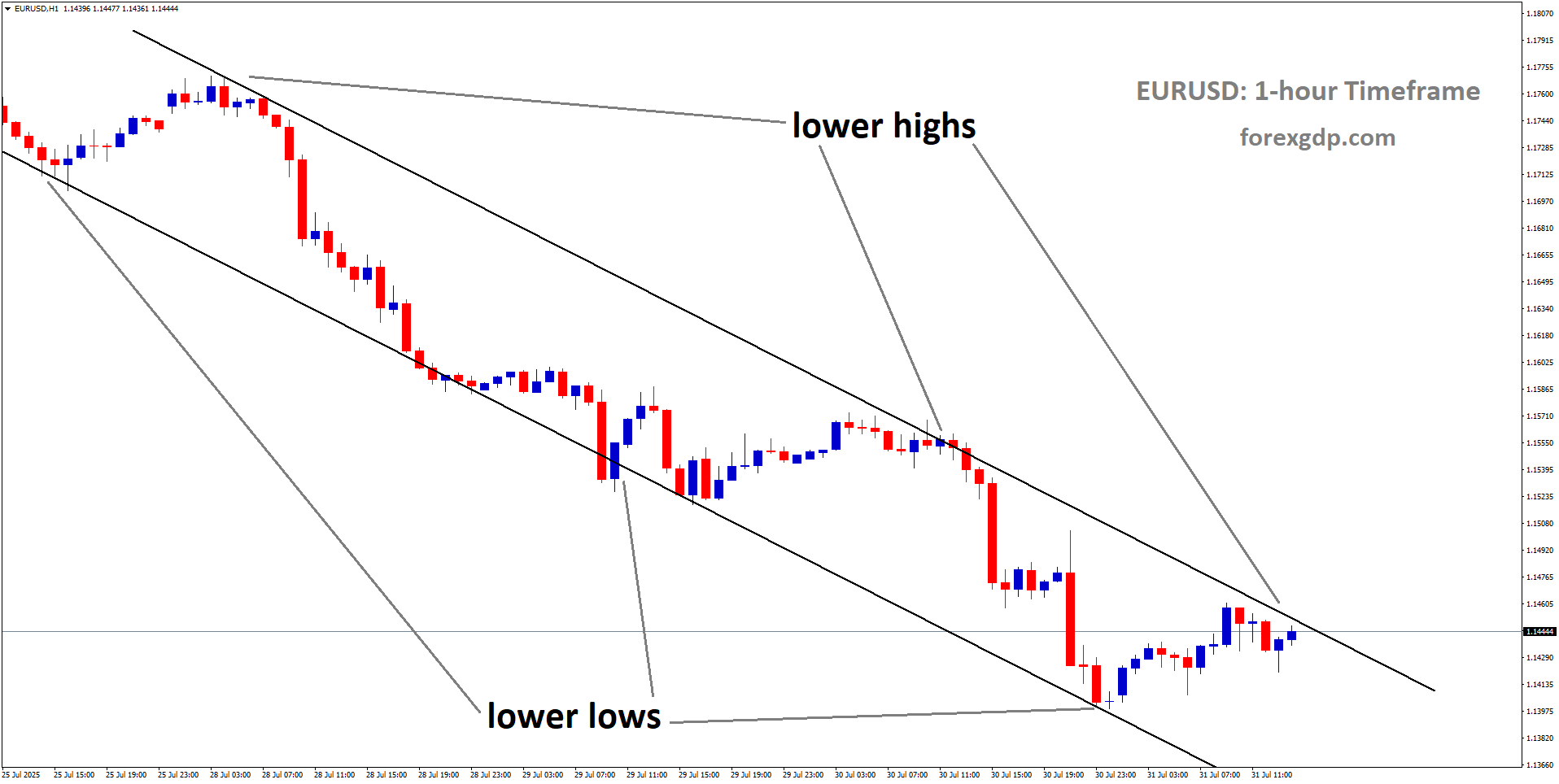
EURUSD is moving in a descending channel, and the market has reached the lower high area of the channel
The US economy is sending out some strong signals, and that’s putting pressure on the Euro. From better-than-expected growth numbers to a firm stance from the US Federal Reserve (the Fed), it’s becoming clearer why investors are leaning towards the Dollar instead of the Euro.
Let’s break it down in a more relatable way.
The US Economy: Steady, Strong, and Dominating the Conversation
So, what’s giving the US Dollar its current edge? In short, it’s the data and the Fed’s response to it.
Stronger Than Expected Growth
This week, the US government released some fresh economic numbers, and the results surprised just about everyone. The economy grew by 3% in the second quarter. That’s a huge jump compared to the slight contraction earlier in the year. For anyone keeping track, that’s not just a bounce — that’s a strong comeback.
Why does this matter? Well, when a country’s economy is doing well, its currency usually gets stronger. Investors like stability, and a booming economy means more jobs, more spending, and more business activity. Naturally, people want to hold onto the currency that reflects that strength — in this case, the US Dollar.
No Rush to Cut Interest Rates
Another big player in all this is the Federal Reserve. After reviewing the latest data, they decided to keep interest rates unchanged. This wasn’t exactly unexpected, but what caught attention was their tone. Instead of giving a hint that rate cuts might be on the horizon, they emphasized patience. The Fed wants more time to see how things play out before making any big changes.
This cautious but confident attitude adds another layer of support for the Dollar. Higher interest rates — or even just the expectation that they’ll stay high — make the Dollar more appealing. Investors get better returns holding assets in US Dollars, and that drives up demand for the currency.
Inflation, Jobs, and Trade Deals: More Fuel for the Dollar
Let’s not stop at just growth and interest rates. The US is checking off a lot of boxes that make its currency attractive.
Inflation and the PCE Price Index
Coming up next on the calendar is a report on inflation — specifically, the Personal Consumption Expenditures (PCE) Price Index. This is the Fed’s go-to gauge for inflation, and it’s expected to show that prices are still rising faster than the ideal 2% target.
Sticky inflation means the Fed might hold off on lowering interest rates for longer. Again, this supports the Dollar because higher rates are seen as a sign of a healthy, inflation-aware economy.

Strong Job Market Numbers
On top of that, job numbers are also looking good. The US added more private payrolls in June than anyone had predicted. When people have jobs, they spend money, and that keeps the economic engine running.
This trend continues to paint a positive picture of the US economy — and it’s yet another reason why the Dollar is gaining traction.
Trade Agreements Calming Global Tensions
While earlier this year the US Dollar took a hit due to trade-related tensions, things are starting to look more stable. New trade deals with South Korea, Japan, and the EU have eased some of the pressure. And these agreements seem to favor the US, giving it a stronger position on the global stage.
Less uncertainty on the trade front gives investors more confidence in the Dollar. It removes one more reason to look elsewhere for safety.
Meanwhile in Europe: Growth, But With a Caution Sign
Now, let’s talk about what’s happening in Europe — and why the Euro isn’t keeping up.
Preliminary data out of the Eurozone showed a small 0.1% growth in the first quarter. Yes, it’s positive, but it’s far below the 0.6% growth from the quarter before. That slowdown has people worried.
While it’s a relief that the economy isn’t shrinking, the minimal growth suggests that Europe is still facing challenges. From slower industrial output to lingering inflation concerns and weaker consumer spending, the recovery isn’t as robust as in the US.
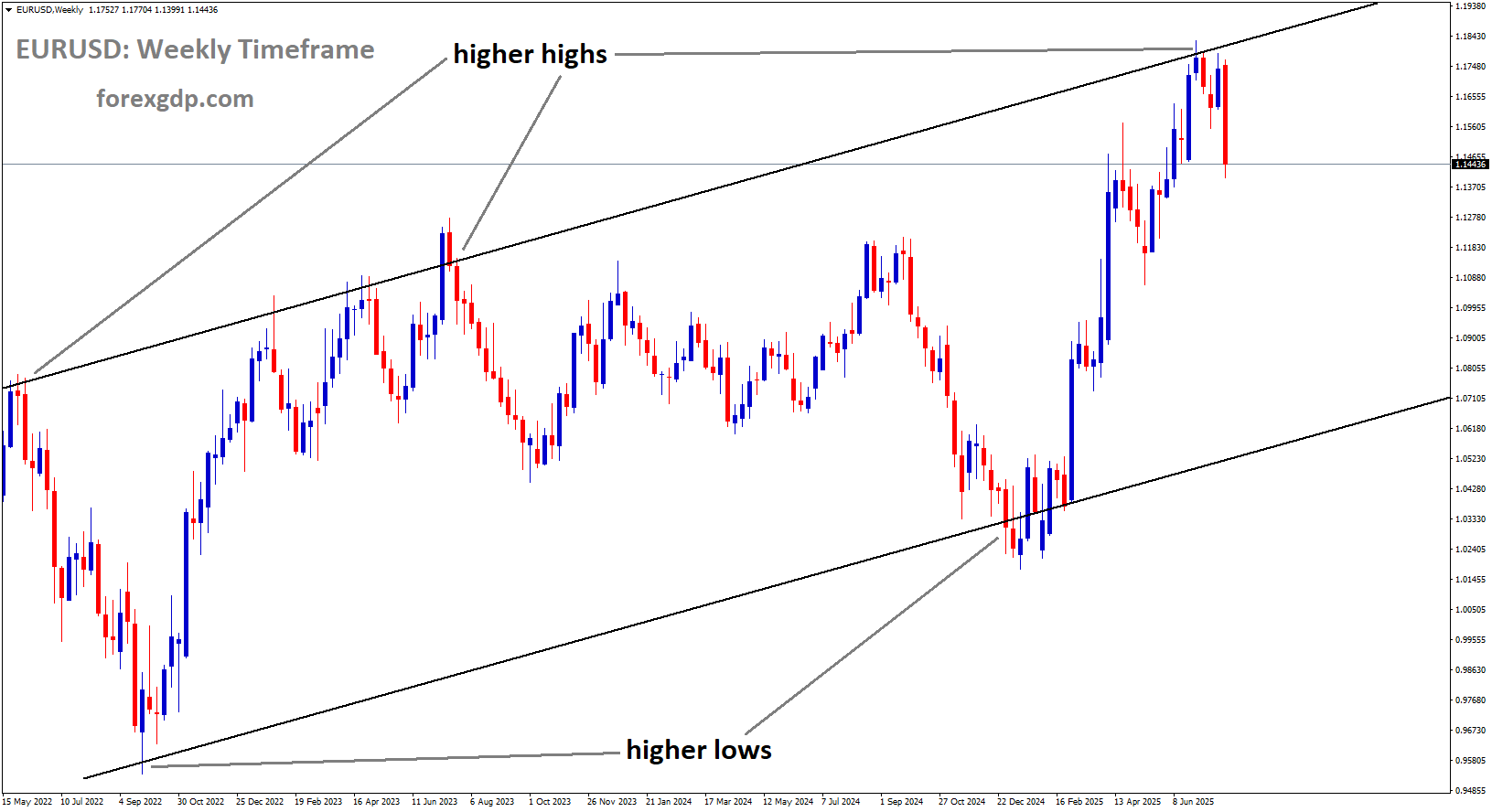
EURUSD is moving in an Ascending channel, and the market has fallen from the higher high area of the channel
With such limited momentum, the European Central Bank (ECB) doesn’t have a lot of room to maneuver. They can’t raise interest rates aggressively without risking further slowing down the economy. And that means the Euro has less going for it in the eyes of investors.
Final Thoughts: Why This Matters to Everyday People
You might be wondering — okay, that’s great, but how does this impact me?
Whether you’re traveling, doing business internationally, or just watching financial trends, shifts in currency strength can affect everything from the cost of goods to investment returns.
A stronger US Dollar can make imports cheaper for Americans, but it can also hurt US exports. Meanwhile, a weaker Euro might benefit European exporters but reduce the purchasing power of European consumers.
From a global perspective, these shifts highlight where confidence lies. Right now, investors believe in the US economy more than the European one. That can change, of course, but for now, the data is clearly favoring the Dollar.
So, next time you hear about the Euro trying to recover or the US Dollar making moves, you’ll have a better idea of what’s going on behind the scenes. It’s not just numbers on a chart — it’s a reflection of economic strength, policy decisions, and global confidence.
USDJPY Rebounds Slightly Following Cautious Tone from BoJ Governor Ueda
The Japanese Yen has been catching a lot of attention lately—and for good reason. There’s been some big talk surrounding the Bank of Japan (BoJ), interest rate decisions, inflation forecasts, and how the Yen is reacting to it all. If you’re someone who follows currencies closely, or even just have a general interest in economic trends, the recent developments in Japan are worth diving into.
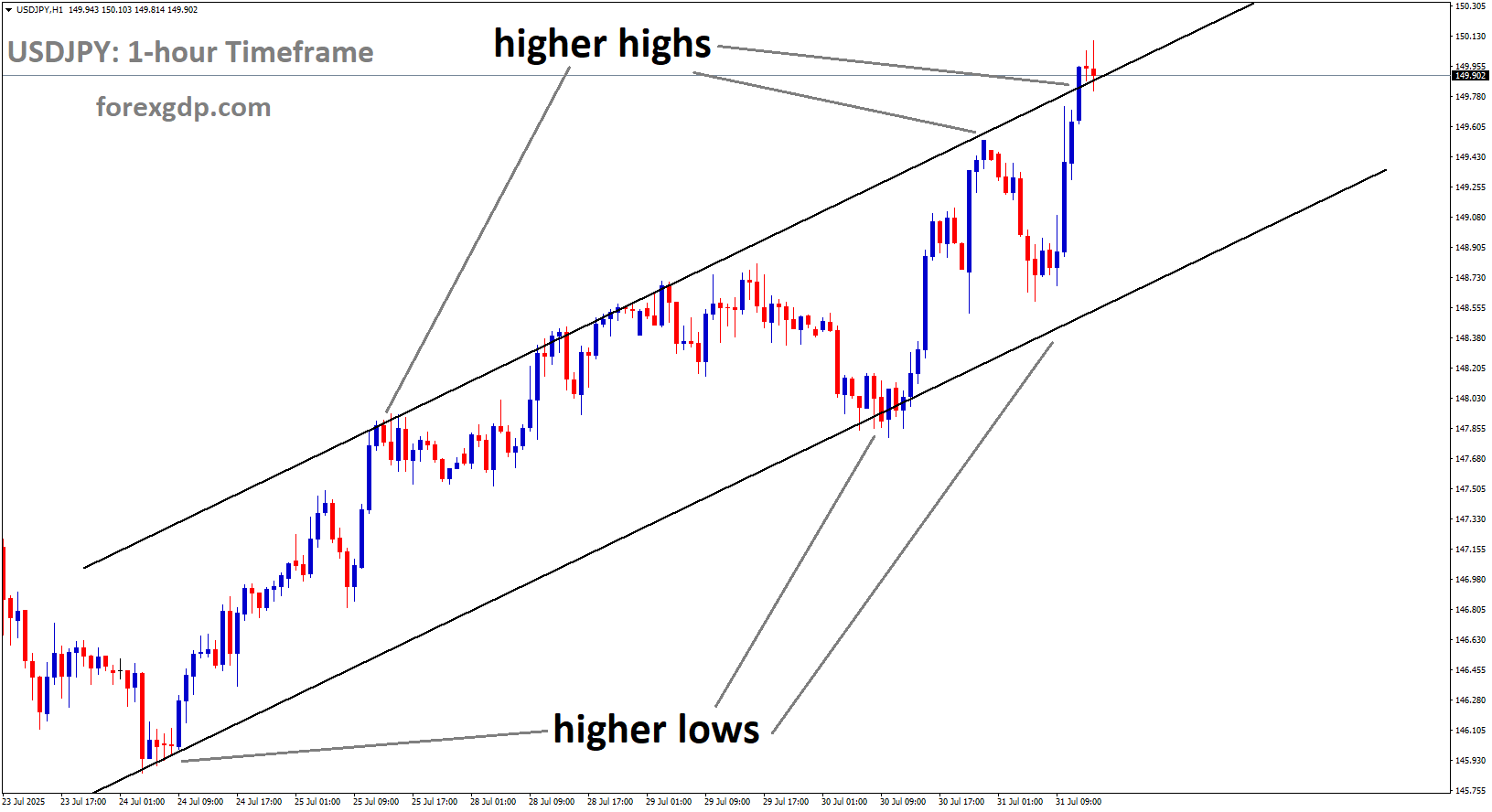
USDJPY is moving in an Ascending channel, and the market has reached a higher high area of the channel
Let’s break it down in a way that’s simple to understand, and explore why the Japanese Yen might be poised for something interesting in the months ahead.
A Quick Look at What’s Happening with the Bank of Japan
Japan’s central bank, the Bank of Japan, just made a big decision—not to make any big decisions. In its most recent meeting, the BoJ chose to leave interest rates unchanged. At first glance, that might not seem exciting, but hold on—what they said (and didn’t say) matters just as much as what they did.
Upgraded Inflation Forecasts Could Signal What’s Coming
One of the key takeaways from the BoJ’s announcement was their decision to raise the inflation forecast for the upcoming fiscal year. They bumped up their projection for Core CPI (Consumer Price Index) to 2.7%—a notable increase from their earlier expectation of 2.2%. This higher forecast is their way of saying, “We’re seeing signs that prices are rising faster than we thought they would.”
Now, when inflation rises, central banks usually respond by raising interest rates to cool things down. So even though the BoJ didn’t make a move this time, they left the door wide open for a potential hike before the end of the year. That’s a pretty big deal, especially considering Japan’s long history of ultra-low or even negative interest rates.
What the Governor Had to Say
Kazuo Ueda, the Governor of the BoJ, didn’t give away too much in his post-meeting press conference—but what he did say was telling. He mentioned that Japan’s economy is showing moderate signs of recovery and that the central bank would let data guide their decisions going forward. That’s basically code for: “If inflation and growth keep heading in the right direction, we’re ready to act.”
Strong Domestic Data Gives the Yen Some Muscle
One of the reasons the Yen hasn’t completely taken off yet is because investors are waiting to see if this talk of future rate hikes actually turns into action. But on the ground, things are starting to look up.
Manufacturing and Retail Show Some Strength
A couple of reports out of Japan this week showed signs of real resilience:
-
Industrial Production in June was up by 1.7% compared to the previous month. That’s a good sign that factories and manufacturers are keeping busy, despite global challenges.
-
Retail Sales also climbed for the 39th straight month. Even with economic uncertainty and rising prices, Japanese consumers are still spending. That’s often seen as a sign of underlying confidence in the economy.

Both of these data points support the idea that Japan isn’t just staying afloat—it might actually be on its way to a more stable and active economic cycle. And that gives the BoJ more room to consider interest rate hikes without the fear of crushing the economy.
Politics and Global Influence: The Other Side of the Story
While the economic side is looking brighter, the political scene in Japan could throw a wrench into the BoJ’s plans.
Political Shifts Could Cause Delays
Recently, Japan’s ruling Liberal Democratic Party lost some ground in local elections. This loss has opened the door for opposition parties who are calling for more government spending and lower taxes. If those calls get loud enough, the BoJ might be forced to hit pause on rate hikes—even if the economic data supports it.
Basically, while inflation and growth are pointing one way, politics might pull in another direction. It’s a delicate balance, and investors are keeping a close eye on how it plays out.
Meanwhile, Over in the U.S…
The Japanese Yen’s performance isn’t just about what’s happening in Japan. What’s going on with the U.S. Dollar is just as important, especially for the USD/JPY currency pair.
The Fed Plays It Cool
This week, the U.S. Federal Reserve also held steady on interest rates. But here’s the twist—two Fed governors actually dissented, which hasn’t happened since the early 1990s. That suggests there’s some disagreement internally about whether rates should be rising or falling.
Fed Chair Jerome Powell made it clear that the Fed isn’t ready to commit to a rate cut yet. He pointed out that the current level of interest rates is only “modestly restrictive,” and the U.S. economy is still holding strong.
U.S. Data Adds Fuel to the Dollar’s Strength
Some recent reports added to the Dollar’s strength:
-
Private-sector job growth in the U.S. surged in July, beating expectations by a wide margin.
-
GDP data showed a solid 3.0% annualized growth rate in Q2—rebounding strongly from a dip in the previous quarter.
These upbeat numbers have pushed the Dollar higher in recent weeks, which tends to weigh on the Japanese Yen. However, with potential rate hikes on the horizon in Japan, this balance might shift soon.
Why You Should Keep an Eye on the Yen
The Japanese Yen is in an interesting spot. On one hand, stronger domestic data and rising inflation could pave the way for the BoJ to finally raise rates—something they haven’t done often over the last couple of decades. On the other hand, political uncertainty and external pressures from a strong U.S. Dollar could delay that move.
So, what does all this mean? It means the Yen could become more volatile and potentially more attractive to traders and investors who are looking for movement and opportunity.
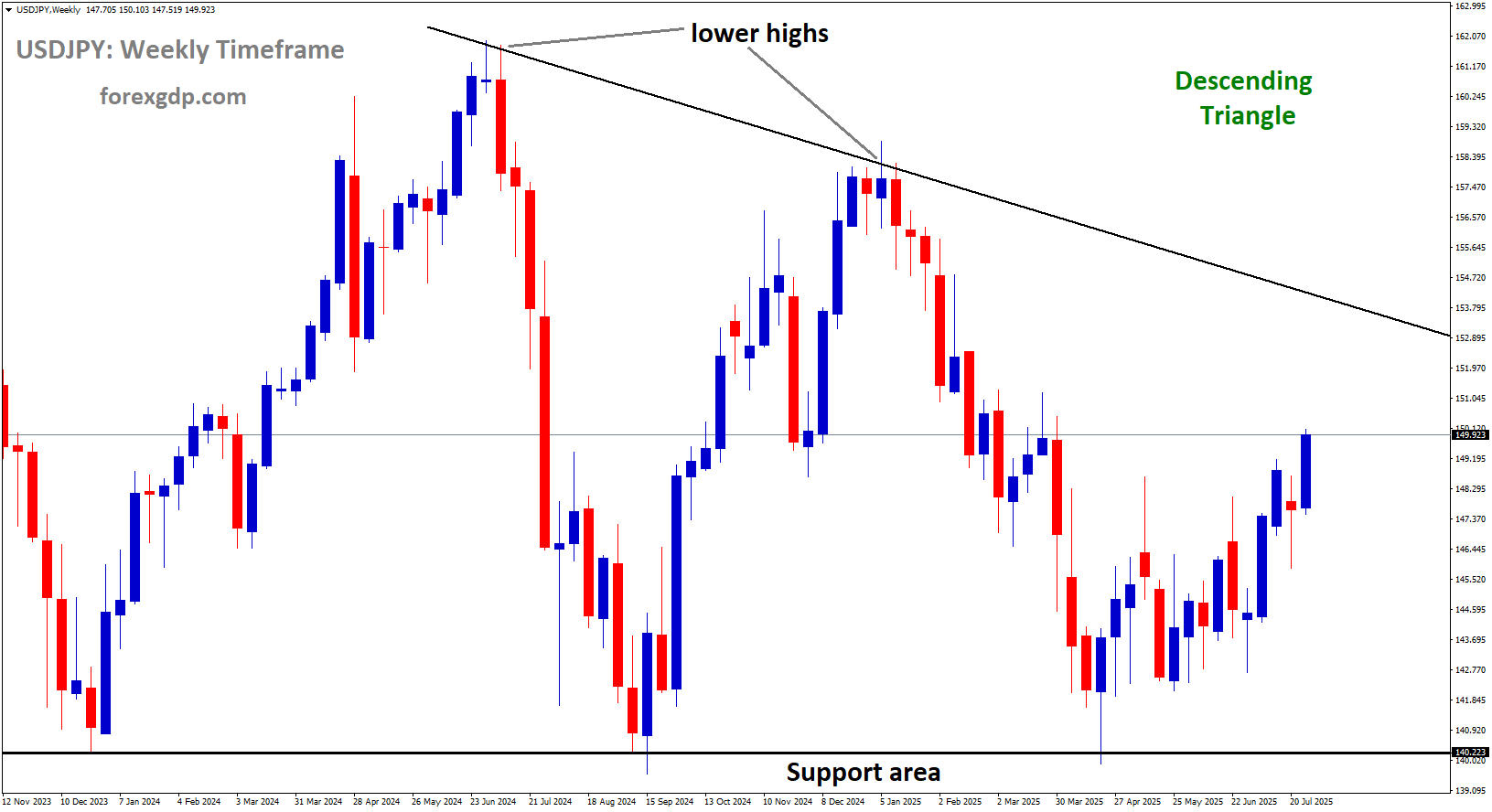
USDJPY is moving in a descending triangle pattern, and the market has rebounded from the support area of the pattern
As always, nothing in currency markets is guaranteed. But if you’re paying attention, this could be one of those moments where keeping a close watch pays off.
Final Thoughts: A Quiet Storm Brewing?
The Japanese Yen may seem calm on the surface right now, but underneath, there’s a lot going on. From inflation expectations and government policy changes to strong economic indicators and U.S. influence, the Yen is being pulled in multiple directions.
The BoJ has made it clear they’re watching closely and willing to act when the time is right. If inflation keeps rising and economic data stays strong, we might finally see a long-awaited shift in Japan’s monetary policy.
Whether you’re trading currencies or just following economic trends for fun, now’s a good time to stay alert. The Yen might just be setting up for something big.
USDCHF Weakens Under Pressure From Rising Trade War Fears
If you’ve been keeping an eye on the currency markets lately, you might have noticed something interesting: the US Dollar (USD) has been losing ground to the Swiss Franc (CHF). At first glance, this might seem a bit surprising. After all, the Federal Reserve isn’t exactly pulling back on its tough stance. So, what’s going on?
Let’s break it down in a way that’s easy to understand, without all the complex charts and market jargon. Whether you’re an investor, a traveler, or just someone curious about what’s happening with global currencies, this article is for you.
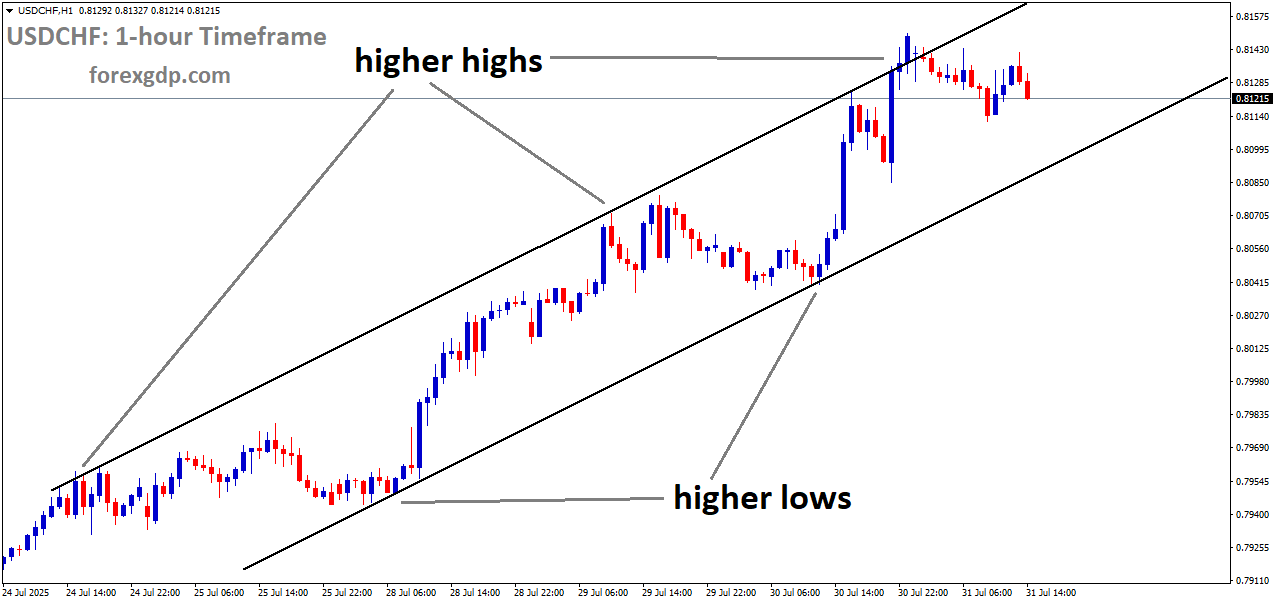
USDCHF is moving in an Ascending channel, and the market has fallen from the higher high area of the channel
The Swiss Franc: Still a King of Calm During Chaos
There’s a reason people call the Swiss Franc a “safe-haven” currency. When things in the world start to look a bit shaky—politically or economically—traders and investors often run toward it like a security blanket. That’s exactly what’s happening right now.
Trade Tensions Heating Up
Recently, there’s been a lot of uncertainty surrounding global trade. The U.S. has taken a firm stance by introducing or expanding tariffs on several countries. President Trump recently announced a new 15% tariff on imports from South Korea, with a large investment package being part of the deal. On top of that, the U.S. has struck new trade agreements with Cambodia and Thailand.
While these moves are aimed at boosting American interests, they also make investors a bit nervous. Every time a new trade barrier goes up, there’s a risk that global trade slows down. And slower trade? That’s usually bad news for growth. So where do investors go when they start to worry? You guessed it—the Swiss Franc.
India Also in the Spotlight
India is also feeling the heat. The U.S. is keeping a 25% tariff on certain imports from the country, and there’s talk of even more penalties. While none of this might affect your day-to-day purchases, it does matter to currency traders. More uncertainty = more interest in safe-haven currencies like CHF.
The Fed Stands Firm: No Rate Cuts For Now
While global trade is one part of the picture, let’s shift to the U.S. Federal Reserve for a moment.
Interest Rates Holding Steady
At their latest meeting in July, the Fed decided to leave interest rates exactly where they are—between 4.25% and 4.50%. This was expected by most analysts, but what’s important is why they did it. The Fed is watching the economy closely, especially the job market. As long as things don’t show major signs of weakening, they aren’t in a rush to cut rates.
Now, usually when a central bank keeps rates high, it supports the strength of that country’s currency. Higher rates mean better returns for investors parking their money in USD-denominated assets. But this time, the Dollar still slipped.

Why? Because the trade fears we talked about earlier are weighing more heavily on traders’ minds. They’re more focused on risk than reward right now. Even with the Fed keeping rates up, many are still shifting their money toward safer currencies.
What Jerome Powell Had to Say
Fed Chair Jerome Powell made it clear: the central bank is not making any sudden moves. It’s going to watch how things unfold—especially in the labor market. So, while a rate hike isn’t off the table entirely, it’s also not a sure thing. That kind of wait-and-see approach doesn’t give the Dollar much of a boost in uncertain times.
Why This Matters to You
Okay, so there’s a lot of behind-the-scenes stuff going on in currency markets. But why should you care? Here are a few ways this USD/CHF movement might actually affect you.
Travel Plans to Switzerland? It’s Gonna Cost More
If you’ve been dreaming of skiing in the Alps or visiting the beautiful lakes of Switzerland, now might not be the best time to exchange your Dollars. A stronger Swiss Franc means your money won’t go as far. Hotels, food, shopping—all of it could feel more expensive because of the exchange rate.
Import and Export Businesses Are Watching Closely
For businesses that deal with imports or exports, especially with Switzerland or countries using similar trading currencies, the change in exchange rates can impact profit margins. A weaker Dollar makes imported goods more expensive and can affect supply chain decisions.
Investment Portfolios Are Shifting
If you’re someone who has investments in international markets—or even just follows global ETFs—this currency shift might be impacting your returns. Some investors are reallocating their funds into safer assets, and that could change which stocks or markets are performing well.
Looking Ahead: What Could Change the Story?
We’re not stuck in this situation forever. Here are a few things that could flip the narrative and help the USD gain back some strength.
-
Reduced Trade Tensions: If the U.S. begins easing up on its tariffs or strikes new, more favorable trade agreements, it could boost market confidence and weaken the demand for safe-haven currencies.
-
Stronger Economic Data: A positive surprise in U.S. job numbers or economic growth could give the Dollar a much-needed lift. Keep an eye on employment reports—those are key.
-
Clearer Fed Signals: If the Federal Reserve starts hinting more aggressively at future rate hikes or rule out cuts, traders might take notice and start betting on a stronger USD again.
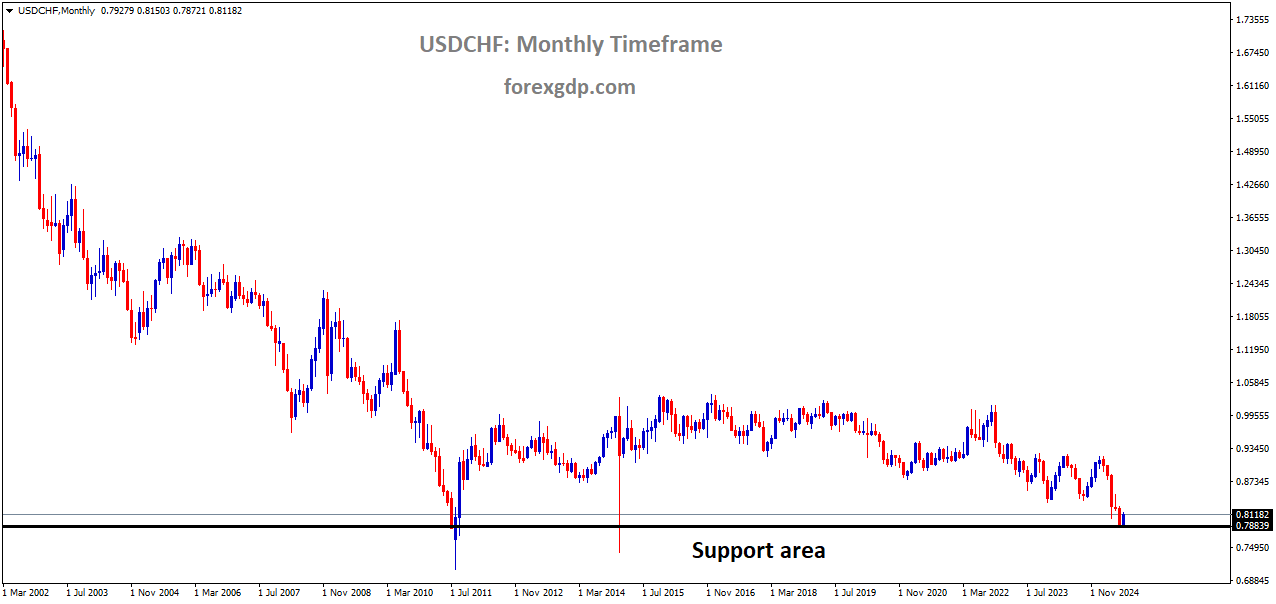
USDCHF reached a major support area
Wrapping It Up
Right now, the USD is on the back foot against the Swiss Franc, and trade worries are a big part of the reason. Even with the Fed keeping interest rates steady and signaling no immediate cuts, it hasn’t been enough to calm market nerves. For now, the CHF is benefiting from its long-standing reputation as a safe place to park money.
For everyday people, this shift might mean pricier trips to Switzerland or higher costs for imported goods. For investors, it’s another signal to watch global developments closely.
But as always, the currency market moves in cycles. Keep your eyes on trade headlines, Fed updates, and key economic data. The story is still unfolding, and the Dollar may yet stage a comeback.
AUDUSD Rises as Aussie Retail Sales Impress and China’s PMI Softens
The Australian Dollar (AUD) has been showing surprising resilience lately. Even as global markets face economic turbulence, this currency is quietly pushing back, gaining strength when many least expect it. Curious about what’s behind the Aussie Dollar’s recent moves? Let’s dive into the key events and factors that are keeping the AUD afloat and what they really mean for you, whether you’re a trader, investor, or just watching the markets.
Retail Surge Gives Aussie Dollar a Boost
Australia’s economy has delivered a pleasant surprise—shoppers are back and spending more. Retail Sales jumped by 1.2% in June, far outpacing market expectations. What’s even more encouraging is that this followed a modest 0.5% increase in May. This upward trend suggests that Australian consumers are growing more confident and willing to open their wallets.
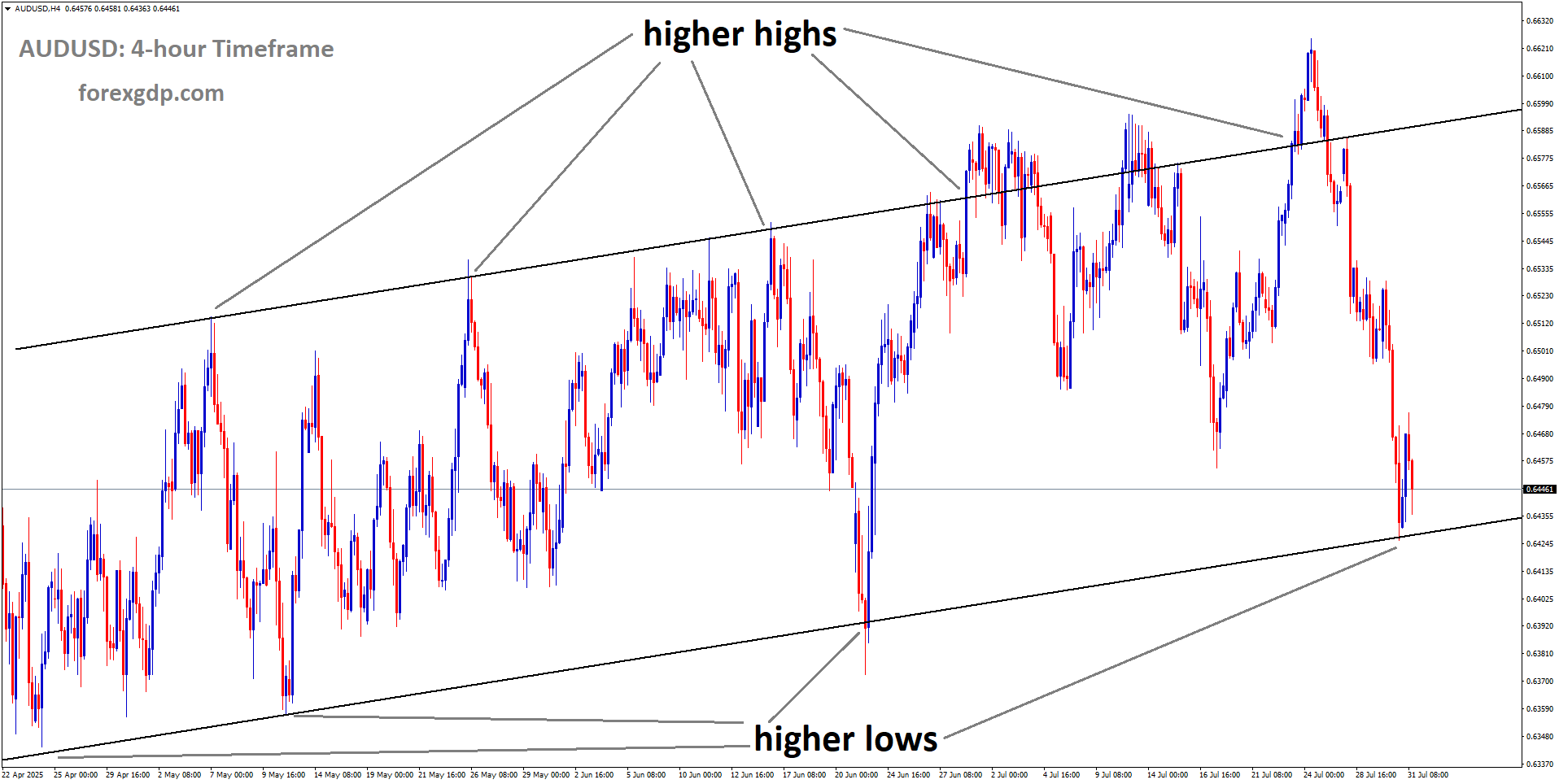
AUDUSD is moving in an Ascending channel, and the market has reached the higher low area of the channel
What’s the Big Deal About Retail Sales?
Retail spending is one of the best indicators of economic health. When consumers spend more, businesses earn more, jobs stay secure, and the economy keeps moving forward. For the Australian Dollar, this boost in spending means more stability and confidence from investors.
Also, keep in mind that Australia isn’t just relying on one good month. Over the entire second quarter, retail spending rose by 0.3%—another sign of steady improvement. All this helps strengthen the currency because it tells global markets that Australia’s economy is staying active.
China’s Slowdown and Why It Still Matters for Australia
Now, let’s talk about China—a country whose economy is closely tied to Australia’s fortunes. Recently, China’s manufacturing and services sectors showed signs of slowing down. The Manufacturing PMI slipped further into contraction territory, while the Non-Manufacturing PMI barely stayed in growth mode.
You might be wondering: “Why does China’s economic health matter so much to Australia?”
Here’s the short version: Australia exports a lot of goods to China, especially raw materials like iron ore and coal. So, when China slows down, demand for these exports can drop. That usually puts pressure on the AUD. However, despite the weak numbers out of China, the AUD didn’t fall this time. Why?
Because the Australian economy is showing enough strength on its own right now—especially through consumer activity—to balance out those external risks.
US Developments Are Shifting the Global Currency Landscape
Over in the United States, the Federal Reserve recently decided not to raise interest rates, keeping them in the same range they’ve been holding for a while. While that was expected, the Fed’s cautious tone about the future created some ripple effects.
Fed Chair Jerome Powell pointed out that the U.S. is in wait-and-see mode, especially with concerns over inflation, tariffs, and global uncertainty. With no immediate changes on the horizon, the US Dollar started to take a breather from its recent rally.

And that’s exactly where the Australian Dollar found its opening.
US Dollar Slows Down, Aussie Dollar Steps Up
With the US Dollar taking a pause, other currencies had a chance to breathe. The Australian Dollar seized this moment. Investors often move their money between currencies based on where they see the most potential for growth. So when the US Dollar cooled off, eyes turned toward currencies like the AUD, especially when backed by solid local data.
Inflation Trends in Australia: More Controlled Than Expected
Inflation is always a hot topic, and in Australia’s case, it’s been cooling down—at least for now. The country’s Consumer Price Index (CPI) showed a 0.7% rise in Q2, slightly lower than the 0.9% growth in Q1. Even the annual inflation rate dipped to 2.1%, marking a gentle slowdown.
Why Lower Inflation Is a Good Sign Right Now
You might think lower inflation means a weaker economy, but not always. In this case, it reflects a healthy moderation. Prices are still rising, but not at an overwhelming pace. That gives the Reserve Bank of Australia (RBA) some breathing room to avoid hiking interest rates further, which can be a relief for businesses and households alike.
It also signals that Australia isn’t in crisis mode. Instead, the country seems to be managing inflation while still encouraging economic activity—another point in favor of the AUD’s recent strength.
Global Trade Tensions and Their Ripple Effect
Trade policies are making headlines again. The US and European Union struck a deal that sets new tariffs on goods, signaling an end to months of trade standoff. Meanwhile, the US and China are still in discussions about tariffs, with more decisions expected soon.
These international developments don’t directly target Australia, but they definitely shape the global mood. When trade relations between major powers improve or stay stable, it reduces global risk. Investors are then more likely to invest in currencies like the Australian Dollar, especially if the local economic data remains strong.
Also, China’s leadership has promised to ramp up spending to stimulate their economy. That kind of government support usually helps trade partners like Australia, even if there’s a lag in seeing those benefits.
What It All Means for You and the Australian Dollar
So, let’s connect the dots. The Australian Dollar is gaining strength not because the global outlook is perfect, but because local confidence is rising, inflation is under control, and international markets are giving it room to grow.
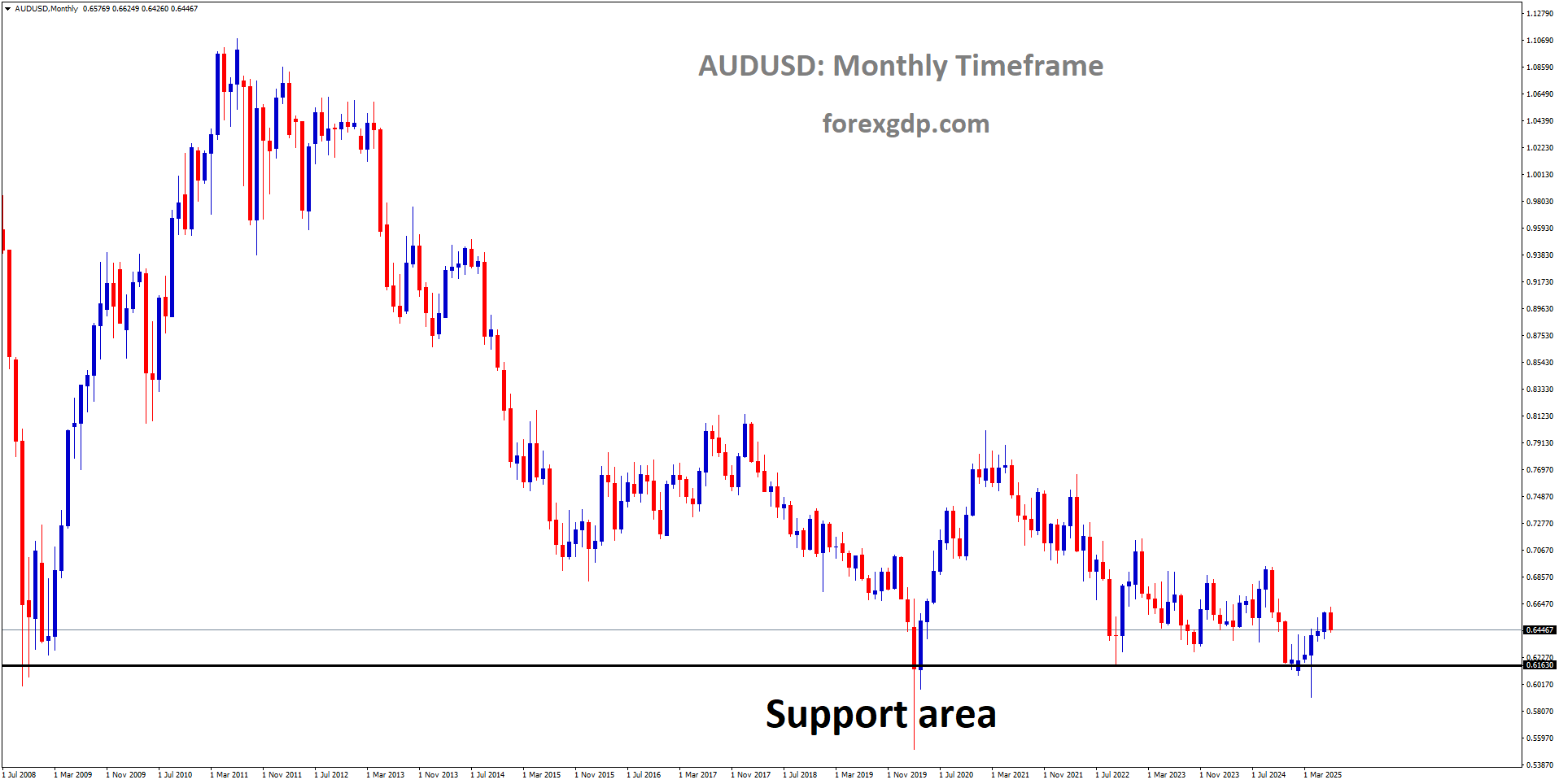
AUDUSD is rebounding from the major support area
Yes, there are challenges. China’s slowdown is real. Global trade tensions still flicker in the background. But for now, the Aussie Dollar is finding its own way forward, backed by strong retail numbers and manageable inflation levels.
Final Summary: AUD Shows Resilience Amid Global Uncertainty
The Australian Dollar’s recent bounce isn’t just luck. It’s the result of real economic trends playing out in Australia—like rising consumer spending and stable inflation. At the same time, global developments like the US Fed’s cautious approach and China’s evolving economic strategy are giving the AUD space to gain ground.
If you’re watching the markets, this is a perfect example of how domestic strength can help a currency weather international storms. The Aussie might still face headwinds, but right now, it’s holding its own—and doing better than many expected. Keep an eye on future data releases and global decisions, but for now, the Australian Dollar is proving it’s got more strength than some gave it credit for.
Don’t trade all the time, trade forex only at the confirmed trade setups
Get more confirmed trade signals at premium or supreme – Click here to get more signals, 2200%, 800% growth in Real Live USD trading account of our users – click here to see , or If you want to get FREE Trial signals, You can Join FREE Signals Now!

